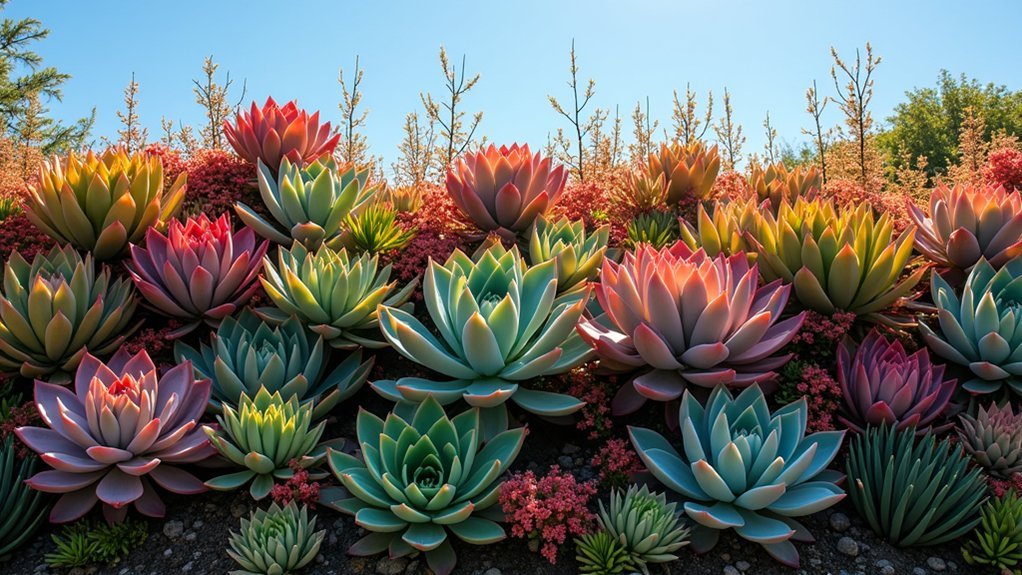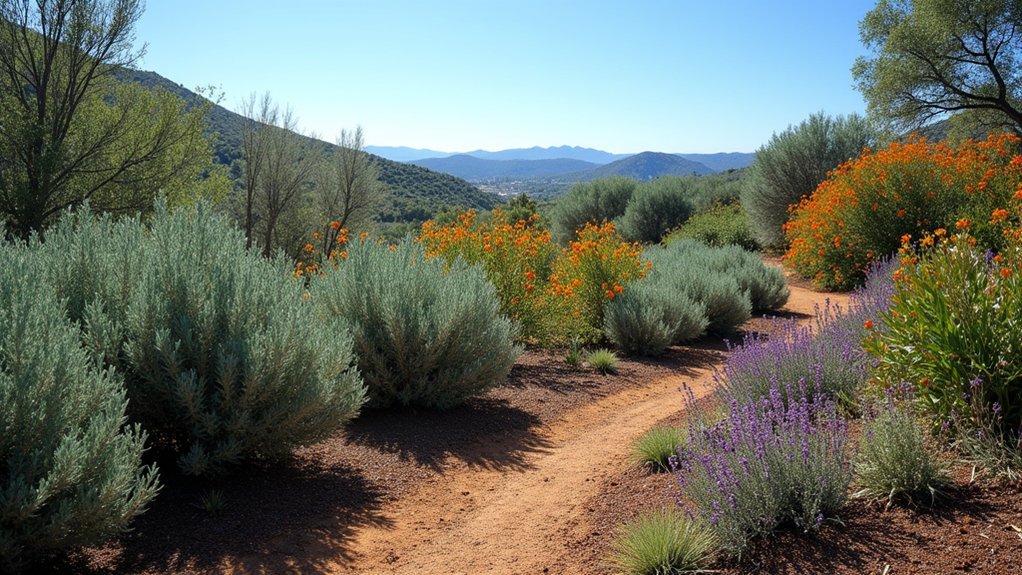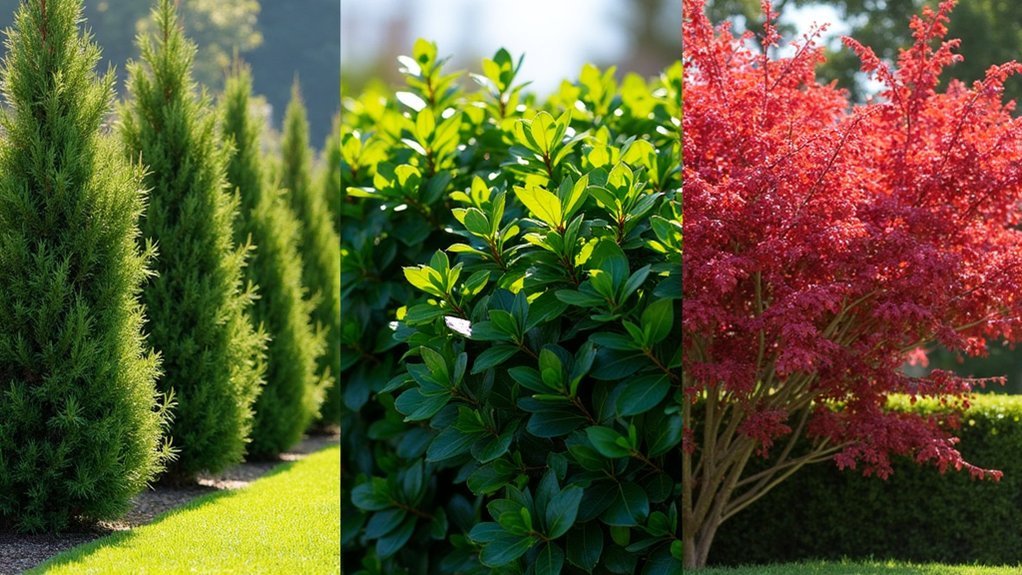For fire-resistant living fences, you’ll want Aloe arborescens (Tree Aloe) for its high moisture content and minimal maintenance, Acacia melanoxylon (Blackwood Acacia) for its ignition-resistant foliage, and ice plants (Carpobrotus) for creating dense, low-flammability ground cover. All three thrive in arid, fire-prone regions while supporting local biodiversity. These natural barriers not only protect your property but also enhance landscape aesthetics with far less water than traditional options.
Succulent Species: Nature’s Fireproof Barrier Options

While traditional fencing materials often become hazards during wildfires, succulent species offer a remarkable alternative as living fire barriers. You’ll find varieties like Aloe arborescens particularly effective due to their high moisture content, which helps reduce fire risk around your property.
These fire-retardant plants serve dual purposes: they create boundaries while intercepting flames and decreasing fire intensity. Consider agaves and ice plants for creating dense, protective hedges with minimal high flammability concerns.
You won’t need extensive maintenance for these living fences, as they thrive naturally in arid, fire-prone regions. For ideal fire safety, incorporate indigenous succulent species into your landscape design—they’ll not only strengthen your property’s fire resistance but also support your local ecosystem’s biodiversity and health.
Native Low-Flammability Trees and Shrubs for Protective Hedgerows
Native trees and shrubs with low flammability characteristics offer another powerful layer of protection beyond succulents. When creating protective hedgerows, consider Acacia melanoxylon (Blackwood acacia) and Myoporum insulare (Australian myoporum), which naturally resist ignition due to their moisture-rich foliage.
You’ll enhance biodiversity benefits by incorporating indigenous shrubs like Leptospermum laevigatum (coast tea tree) into your living fence design. These fire-resistant species not only protect your property but also support local ecosystems and wildlife.
For maximum effectiveness, plant dense hedges using a variety of native low-flammability trees. This strategy creates natural barriers that slow fire spread while preserving the aesthetic appeal of your landscape.
Adding Aloe arborescens among your selected native species further reinforces your property’s defense against wildfires.
Mediterranean Climate-Adapted Plants for Fire-Resistant Boundaries

Mediterranean climate regions demand specialized plant selections for fire-resistant boundaries due to their hot, dry summers and periodic wildfire risk.
When designing living fences for these drought-prone areas, prioritize succulent plants like Aloe arborescens and ice plant, which store moisture and resist ignition during fire events.
Indigenous plants such as Acacia melanoxylon and Myoporum insulare offer dual benefits of fire protection and biodiversity enhancement.
You’ll find these low-flammability species create effective barriers by slowing fire spread around your property.
For maximum protection, combine deciduous trees with lower shrubs to create strategic fire breaks that interrupt vertical flame movement.
This layered approach prevents crown fires while maintaining aesthetic appeal.
These specialized living fences require less water than traditional landscaping—a vital advantage in Mediterranean climates where conservation matters.
Frequently Asked Questions
What Is the Most Fire-Resistant Fence?
Steel fencing, especially corrugated steel, is your most fire-resistant option. It’s passed 30-minute flame immersion tests, won’t ignite, and effectively blocks radiant heat. Fiber cement and ornamental iron are excellent alternatives too.
What Fences Don’t Burn?
You’ll find that non-combustible fences like steel, chain link, ornamental iron, fiber cement, and Durabond corrugated steel don’t burn. Woven wire fences attached to steel T-posts also resist ignition during wildfires.
What Plant Is Most Resistant to Fire?
Among plants, you’ll find aloe arborescens is most resistant to fire. Its succulent nature retains moisture, making it hard to burn. Other top contenders include acacia melanoxylon and myoporum insulare for your protection.
What Is the Most Fire-Resistant Animal in the World?
The African elephant is considered the most fire-resistant animal. You’ll find they navigate through fire-prone savannas with their thick skin, size, and instinct to avoid flames, often leading other animals to safety.
In Summary
You’ve now discovered three excellent options for creating living fences that won’t fuel a wildfire. From water-storing succulents to carefully selected native species and Mediterranean-adapted plants, you’ll find choices that match your climate and aesthetic preferences. By incorporating these fire-resistant species into your property boundaries, you’re not just creating privacy—you’re building a smart defensive barrier that enhances your home’s fire safety strategy.





Leave a Reply